This page chronicles an ongoing experimental archaeology project in which I am replicating the stamping dies used to decorate pottery from the late Iron Age into the Early Medieval period. Using examples of 5th-7th c. CE pottery finds from modern-day France, Germany, Britain, Italy, Belgium, the Netherlands, and Sweden as a starting point, I attempt to recreate the stamp impressions using tools, methods, and materials that can be documented to that period. I began the project in earnest in the summer of 2020, and to date have reproduced nearly 100 stamp dies and rouletting tools from finds in the Anglian, Saxon, Frankish, Langobardic, Alemannic, and Gotlandic styles.
For an overview of the project and gallery of examples, take a look here.
Latest additions:

Starter Pack
Someone recently asked me about what stamp dies would be the best for someone starting out with early Anglian/Saxon decorated pottery, so I thought I’d put a post together with some information on that. Although the decorated pots from Anglian and Saxon Britain from around 450 to 650 CE have an incredible range of different…
Keep reading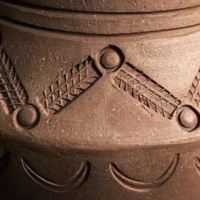
Migration Era Gotland: Part 1
I’ve been getting more into the Migration Era ceramics from Gotland, and while I have a handful of Gotland-specific stamp dies and plenty more that are motifs common to Gotlandic, Anglian/Saxon, and Langobardic pots, I wanted to make a few more that were based directly on finds from Gotland. This is Part 1 of a…
Keep reading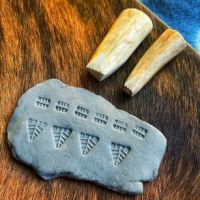
A most unusual bean: Northfleet Revisited
As a general rule, when reconstructing stamping dies I like to work directly from a photograph of the original pot. Looking at the way light hits a stamp impression is the best way for me to understand the way the die would have been carved: which portions are in higher relief, the order of cuts,…
Keep reading
O (inverted) Christmas Tree…
After a run of mostly Anglian stamps, I thought I would mix it up with this Kentish pot. The triangular stamp has a leaf-vein motif, and the shape certainly puts me in mind of a silver birch leaf or perhaps a black poplar. The pot itself is in the collection of the museum in Maidstone,…
Keep reading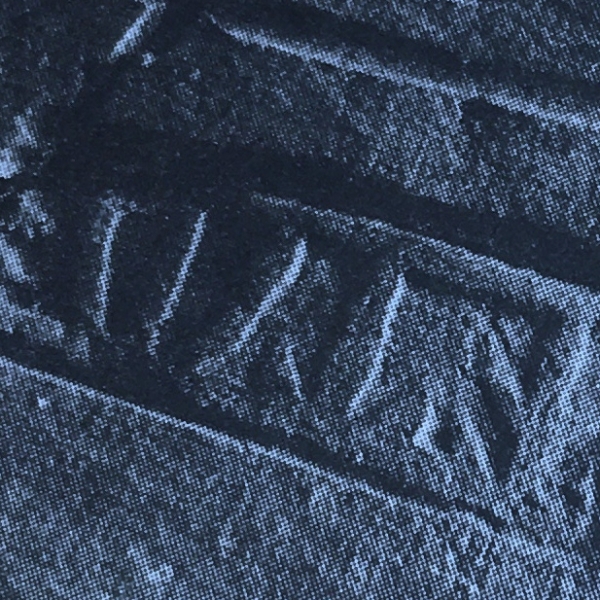
Magic Beer Stamp?
Runic inscriptions in Anglian and Saxon pottery are quite uncommon, but several 5th century urns were found in the cemetery at Spong Hill in North Elmham, Norfolk, bearing similar stamps comprised of three runes. They are stamped upside down on the exemplar, but the letters are Elder Futhark mirror runes (mirrored across the vertical axis).…
Keep reading
Going to Gotland
I recently got an order for a dozen pots that will be based on some late Iron Age finds from Gotland, so I recreated a set of stamp dies using two groups of pot shards in the collection of the Historiska Museet in Stockholm. These were found at the same location in Grötlingbo parish, and…
Keep reading
A Tale of Two Triangles
I got started with stamped pottery via an interest in Langobardic pottery styles, but once I began to branch out into the styles associated with insular Saxon and Anglian pottery traditions from the same time period, I started seeing a lot of similar general shapes and motifs. The gridded diamonds, for example, or some of…
Keep reading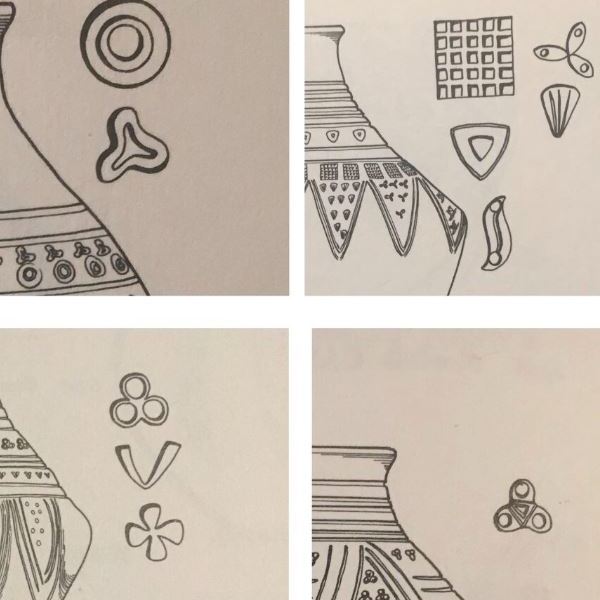
Trefoil Time
There are a couple of very small trefoil-shaped stamps shown in the primary source for the Anglian and Saxon examples I work from, and today I decided to take a crack at one of the tiniest, fiddliest ones. The exemplar is shown here at the lower right, from a pot found at Newark in Nottinghamshire,…
Keep reading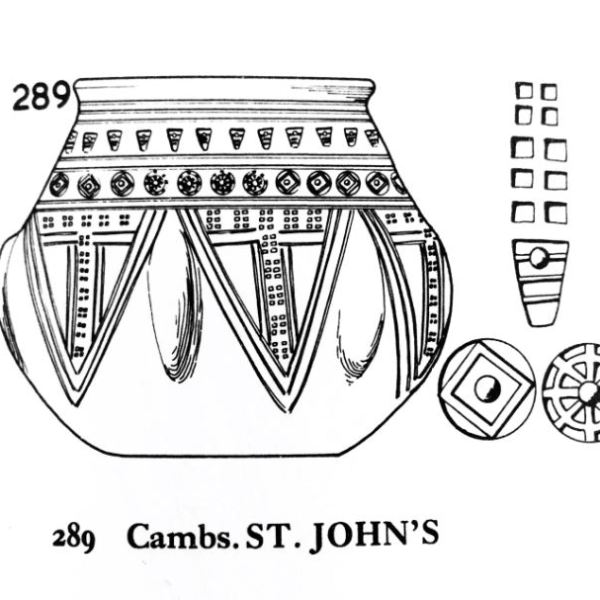
Gang of Five: Urn from St. Johns
I had the day off work and it was pouring rain outside, so I ended up spending more time than usual in my shop this afternoon. I took the opportunity to tackle a group of five stamps that all appear on one pot from the cemetery at St. Johns in Cambridgeshire. Myres attributes this urn…
Keep reading
The Girton/Newnham Potter
Continuing with the theme of specific workshops in East Anglia, here is a pair of stamp dies based on the ones used by a potter working in what is now Cambridgeshire. Examples of their work have been found in Girton and Newnham, and incorporate a triangular and cruciform stamp, both of which have a hollow…
Keep reading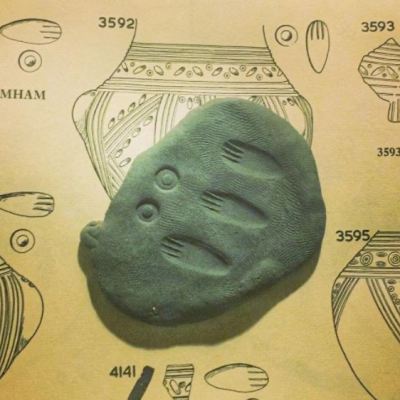
Planta Pedis workshop
Here’s another case in which a particular pot stamp is distinctive enough to identify a specific potter or workshop. J.N.L. Myres identified this one as the “Planta Pedis” workshop (Latin for the sole of the foot) and while the shape of the stamp is highly simplified compared to the elaborate sandal-clad feet in Pannonian examples…
Keep reading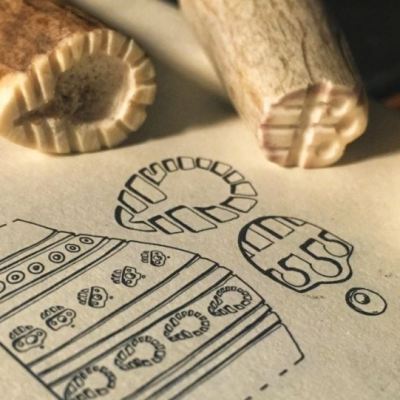
Three stamps from Lackford
While a lot of the stamps found on British pottery in the Anglian or Saxon style use common, simple motifs like rings, quartered circles, or various shapes divided into grids, there are many that are quite distinctive. Today’s project was a grouping of three stamps based on a pot found at Lackford in Suffolk (just…
Keep readingLoading…
Something went wrong. Please refresh the page and/or try again.


